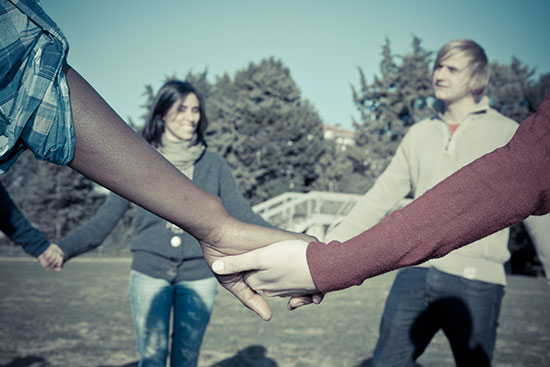[Editor's note: The following is an excerpt from Diversity and Visual Impairment: The Influence of Race, Gender, Religion, and Ethnicity on the Individual, edited by Madeline Milian and Jane Erin. This excerpt was authored by Virginia Bishop.]
The inclusion of visually impaired people in a religious community does not usually happen by accident; it is more often the result of planned efforts. Although each congregation is different, there are some general guidelines that may help in designing a plan. If enduring change is to take place, some kind of cooperative effort should occur, and this joint effort should include professionals, people with visual impairments, and general members of the congregation. The creation of a task force, committee, or mission statement may be an initial step, followed by a congregational seminar or training session.
During the initial planning stage, there may be some public affirmation of welcome. Examples of such affirmations may be an extra line in the church or synagogue's telephone book or an announcement in newspapers. Examples may be a statement in a bulletin that “All are welcome. Please let us know what we can do to make this service meaningful for you” or a sign posted in the lobby of the site of worship stating that accommodations are available. If possible, a list of suggestions or guidelines for the congregation can be distributed in advance.
The accessibility of the worship environment may need to be evaluated for individuals who are visually impaired. Three specific areas for modification may need to be explored:
Printed materials. Making programs, scriptures, hymnals, study outlines, prayer lists, announcements, devotionals, prayer books, and so forth available in braille or large type or in recorded or electronic form will allow persons with visual impairments to express their preference, depending on their primary reading medium.
Rituals or ceremonies. When a ritual or ceremony involves movement from one location to another, some adaptation may be needed. One option may be to arrange for assistance from a friend, family member, usher, or other individual, although the visually impaired person should always have the choice of moving independently. Another option may be to bring the ceremonial elements to the pew, so that a visually impaired person can participate fully with minimal assistance. People with visual impairments should be encouraged to let others know their preference if they need assistance so that arrangements can be made.
Lighting. Many visually impaired persons use vision to travel, and many are able to read print, sometimes with enlargement or optimal lighting. Check the lighting in hallways and stairs because these areas may be darker than others. If there are steps or stairs, the edges of the steps may be highlighted with contrasting tape or paint to make them more visible. If there are elevators, place braille labels on the control buttons.
The process of including an individual with a visual impairment in a religious community is not difficult to do. Every congregation can begin to make the change. Rabbi Harold Kushner said, "Religion offers community to our lonely human souls." When the religious community seeks to include all who are interested, it fulfills that mission.
Diversity and Visual Impairment: The Influence of Race, Gender, Religion, and Ethnicity on the Individual is available at the AFB Press Bookstore.
People holding hands photo courtesy of Shutterstock.
